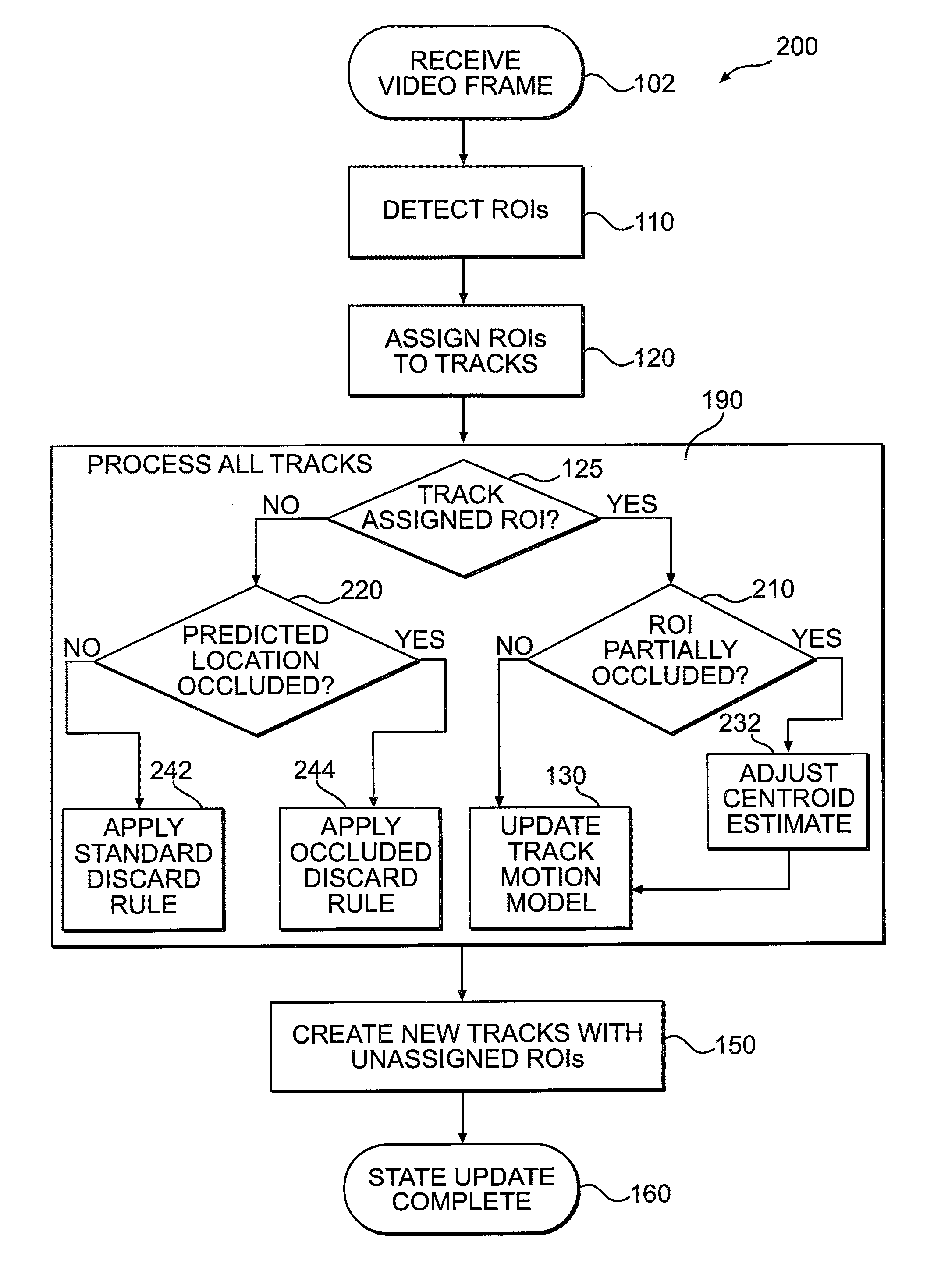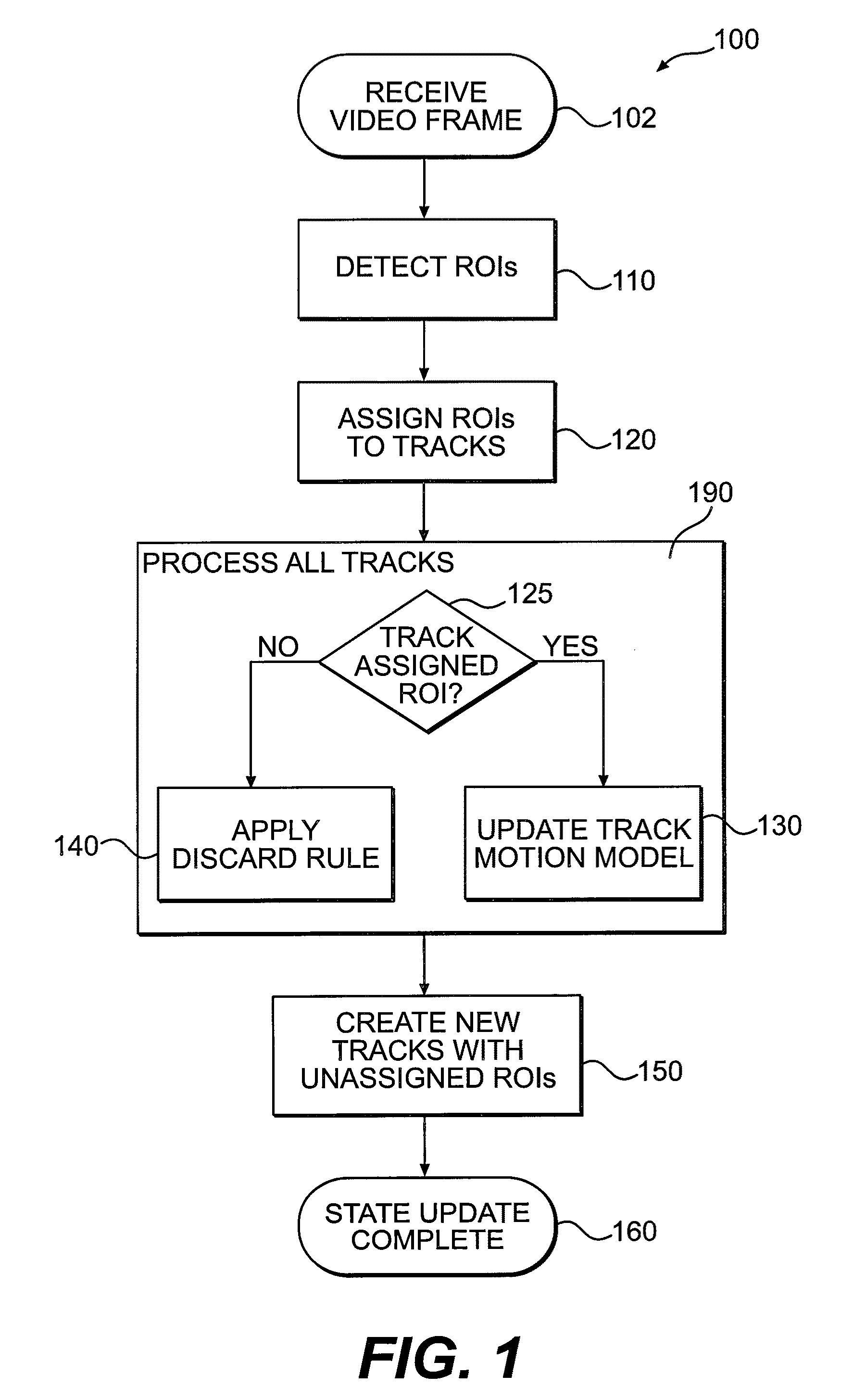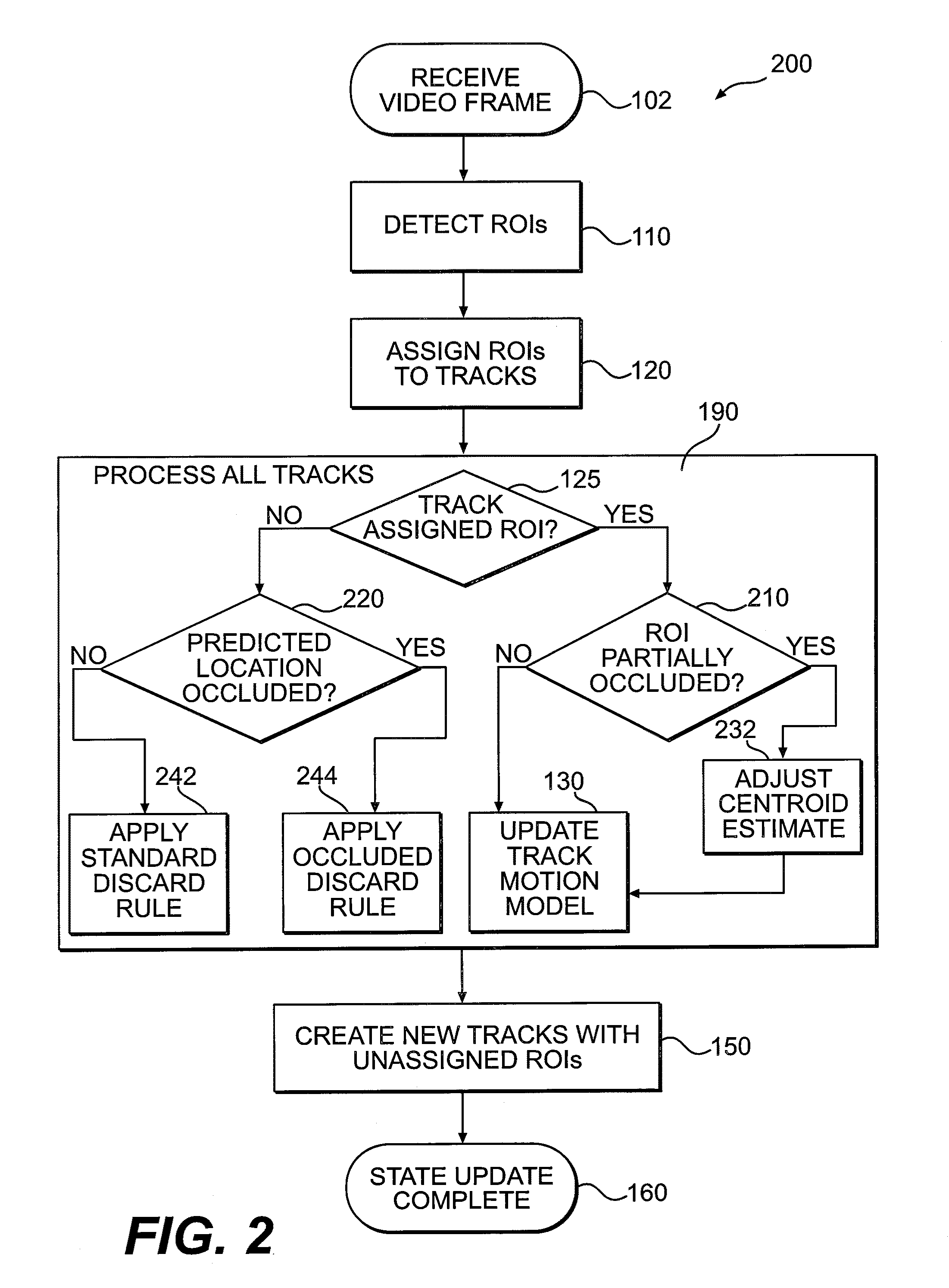System and method for visually tracking with occlusions
a visual tracking and occlusion technology, applied in the field of visual tracking with occlusions, can solve the problems of not being able to effectively track a target, many obstacles exist for effective tracking, and the current visual tracking system is not suitable for tracking
- Summary
- Abstract
- Description
- Claims
- Application Information
AI Technical Summary
Benefits of technology
Problems solved by technology
Method used
Image
Examples
Embodiment Construction
[0015]Described herein are tracking algorithm modifications to handle occlusions when processing a video stream including multiple image frames. Specifically, systems and methods for handling both partial and full occlusions while tracking moving and non-moving targets are described. The occlusion handling embodiments described herein may be appropriate for a visual tracking system with supplementary range information.
[0016]An exemplary visual tracking algorithm may identify target regions within a stream of input images, and associate target regions across video frames. FIG. 1 is a flow chart illustrating an exemplary method 100 that uses the exemplary visual tracking algorithm in a visual tracking system to process a new video frame. After receiving the video frame (block 102), for each new image, the exemplary method 100 identifies target regions in the image, i.e., Regions of Interest (ROIs), (block 110) and assigns target regions with old or new tracks (block 120).
[0017]In bloc...
PUM
 Login to View More
Login to View More Abstract
Description
Claims
Application Information
 Login to View More
Login to View More - R&D
- Intellectual Property
- Life Sciences
- Materials
- Tech Scout
- Unparalleled Data Quality
- Higher Quality Content
- 60% Fewer Hallucinations
Browse by: Latest US Patents, China's latest patents, Technical Efficacy Thesaurus, Application Domain, Technology Topic, Popular Technical Reports.
© 2025 PatSnap. All rights reserved.Legal|Privacy policy|Modern Slavery Act Transparency Statement|Sitemap|About US| Contact US: help@patsnap.com



